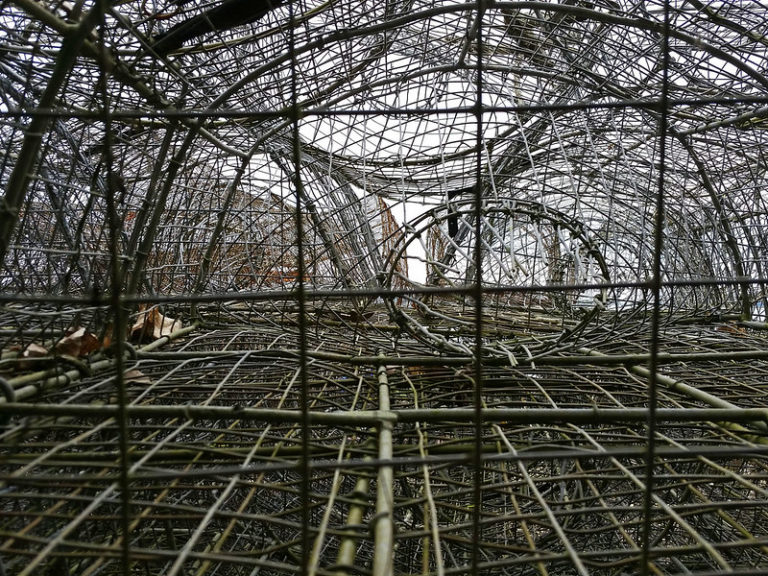Canada – New GMOs: Missed opportunity for transparency

After foods, the Canadian government has turned its attention to seeds derived from new genetic modification techniques. Without any real democratic debate, it is allowing these GMO seeds to be released into the environment without health and environmental risk assesment.
After foods in May 2022 [1], the Canadian government has turned its attention to seeds. On 3 May 2023, the Canadian Food Inspection Agency (CFIA) updated its guidance document explaining which genetically modified plants require authorisation before they can be released (field trials, seed production, commercial cultivation, etc.) [2]. This text is not legally binding. However, its review will allow certain genetically modified plants, including new GMOs, to be cultivated without prior authorisation or independent assessment of the health and environmental risks.
Favourable administrative bias for new GMOs
In Canada, there are no specific rules applicable to GMOs. The cultivation of GMOs is subject to authorisation and prior assessment of health and environmental risks only under certain conditions laid out in the Seeds Regulations (see text box, below). In short, plants are regulated on the basis of the traits they express and not on the basis of the method used to obtain them. This is known as the product-based approach. With its new guidelines, the CFIA says it aims “to minimize subjective interpretation” of the conditions that trigger application of the Seeds Regulations.
GMO cultivation under Canadian law
According to a product-based approach, a plant (including a GMO) is subject to the Seeds Regulations if it meets the definition of a “plant with novel traits”. Two criteria must be met. Firstly, the (intentionally introduced) trait must be new to cultivated populations of the same species in Canada. Secondly, the plant must have a potential to have significant negative effect on the environment (effects on biodiversity, gene flow, effects on non-target organisms, etc.). The distinction between the different techniques used to obtain the plant is irrelevant in determining whether or not the regulations apply. If the criteria are met, the cultivation of the plant is subject to prior authorisation and a health and environmental risk assessment must be carried out by the Canadian Food Inspection Agency.
However, the main effect of the updated version of the guidelines could be to remove a large number of GMOs from the scope of the Regulations, including those derived from new techniques. In essence, the Agency explains that for GMOs containing foreign DNA, prior authorisation remains mandatory [3]. However, for plants derived from “conventional breeding” methods [4] and for GMOs derived from new genetic modification techniques (called “gene-editing technologies”), the Agency “does not expect to receive (authorisation) requests”. Why not? Quite simply because it “does not foresee significant negative impacts” on the environment for these plants. Without a real demonstration, it states that, “it is (its) scientific opinion […] that there is no inherent risk associated with gene-edited plants” [5].
CFIA’s statement does not mean that the new GMOs are a priori excluded from the scope of the Regulations. In fact, the Agency even acknowledges that they may contain foreign DNA (see text box below). Like any other plant, the release of these GMOs will be subject to authorisation and risk assessment on the basis of their traits and the impact of these traits on the environment and human health. Nevertheless, by stating firmly for the first time that it does not expect to receive applications for authorisation for these GMOs, CFIA is sending a clear message to industry: the Canadian market is open and the climate is biotech-investment-friendly. This is all the more true that, under Canadian law, it is the companies themselves that determine, on the basis of their own risk assessment, whether or not their plant falls within the scope of the Regulations. New GMOs will therefore escape regulation if companies believe they are safe for the environment and contain no foreign DNA. According to the Canadian Biotechnology Action Network (CBAN), no one will check the companies’ data. CBAN predicts that very few companies will seek advice from the CFIA to determine the legal status of their GMOs. For Lucy Sharatt, coordinator of the CBAN, this is “(a) is a shocking abdication of responsibility by our regulators. The government has fully turned GM food safety over to companies using confidential, privately-owned science” [6].
Shift in discourse?
In its new guidelines, CFIA draws a distinction between GMOs containing no foreign DNA and GMOs containing foreign DNA. But the Agency does not reduce the latter category to transgenic GMOs. It states that “(f)or gene-edited plants, the DNA that encodes gene editing machinery (for example, Clustered Regularly Interspaced Short Palindromic Repeats (CRISPR)-associated (Cas) protein(s) and associated guide ribonucleic acids (gRNAs)) is considered foreign DNA if not removed through rounds of breeding and selection. If a gene-edited plant intended for environmental release still contains the DNA encoding this machinery within its genome, that plant requires an authorization” [7]. The Agency also acknowledges the existence of unintended and off-target effects, although it minimises their frequency and says plant breeders can mitigate the risk…
GMO-free farming and transparency challenged
No prior notification to the authorities is required for cultivation if a company considers that its plant is not novel. This means public authorities don’t know the location of the crops, the species concerned, and so on. And, as there is no obligation to label GMOs in Canada, consumers and farmers remain in the dark as well.
The updates guidelines are therefore of particular concern to the organic farming sector. The Canadian Organic Standards prohibit GMOs (expressly citing Crispr among other techniques). They also require farmers wishing to obtain organic certification to”design and implement a risk management plan to prevent GE contamination” [8].
The organic farming organisation Canadian Organic Growers fears that the updated guidelines will expose organic farmers to the risk of losing their certification: without prior notification requirement of GM crops, farmers will not be able to prevent contamination [9]. The organisation is deeply disappointed that the concerns of organic farmers have not been heard or taken into account.
In the face of the concerns expressed by the sector, the government has merely announced a series of non-binding measures to ensure transparency [10]. It announced the creation of a “Government-Industry Steering Committee on Plant Breeding Innovations Transparency to facilitate ongoing discussions as gene-edited products are introduced in the marketplace”. It also announced that the Seeds Canada database [11], which is created and maintained by the seed industry, would be expanded “to provide transparency around individual seed varieties”. The Canadian government explains federal oversight will ensure the completeness of the database.
New guidelines, no real democratic debate
The updating of the guidelines could have been an opportunity to consider that all genetically modified plants are subject to regulation. But the revision of this non-legally binding text, which does not change the Seed Regulations, was not debated in Parliament. It was preceded by a public consultation, based on a questionnaire, from 19 May to 16 September 2021. However, as Lucy Sharratt told us in July 2022, this consultation took place in the middle of the farming season. What’s more, the questions asked were biased, in particular due to the use of terms that were unfamiliar to the general public and had no legal definition (“gene editing” rather than “genetic modification”, for example). At the end of the consultation, CFIA received 316 completed surveys, 143 emails, and 49 formal letters [12]. The Agency did not take into account comments calling for the regulation of GMOs derived from new genetic modification techniques to be strengthened, for example by introducing mandatory prior notification and risk assessment.
On the other hand, the explanatory document accompanying the updated version of the Agency’s guidelines contains a discourse that echoes the communication from the biotechnology industry. In particular, it states that “(g)ene editing technologies enable higher precision and comparable or significantly fewer unintentional genetic changes than are seen with other plant breeding techniques” [13]. It also states that “(b)reeders can use gene editing to combine useful characteristics by design rather than by relying on chance and multiple breeding cycles”.
Both these statements and the updated guidelines raise questions given the serious doubts concerning the influence of lobbies in the review process of the guidelines (see text box below).
CropLife co-writer of CFIA guidelines?
In September 2022, Radio Canada revealed that the Word documents on which the Canadian government presented its reform had been written by Jennifer Hubert, Executive Director of CropLife Canada, a lobby group that defends the interests of the seed and pesticide industry [14]. Hubert, who is also a former employee of Syngenta and Monsanto, admitted to Radio Canada that she had “provided suggestions and recommendations” and “worked with the CFIA [Canadian Food Inspection Agency] in recent years on these guidelines”. The Agency, for its part, explained that it had prepared its responses to the comments in one of the copies it had received, hence the fact that Jennifer Hubert appeared to be the author of the documents. Another rather unfortunate element: a CropLife initiative on herbicide-resistant crops (“Manage Resistance Now“) is promoted in a rather poorly disguised way in the explanatory document accompanying the Agency’s guidelines.
[1] , « Canada : ces OGM qui échappent à l’évaluation des risques », Inf’OGM, 7 April 2023.
, « Canada – Nouveaux OGM : ni transparence, ni évaluation », Inf’OGM, 23 June 2022.
[2] Government of Canada, “Directive 2009-09: Plants with novel traits regulated under Part of the Seeds Regulations: Guidelines for determining when to notify the CFIA”, 3 May 2023.
[3] The same goes for herbicide-tolerant plants that do not contain foreign DNA, but CFIA offers a streamlined process in them.
[4] The list of these techniques, drawn up by CFIA, is based on a list with no legal value drawn up by Wageningen University (The Netherlands). It includes mutagenesis (via chemical mutagens or ionising radiation), cell fusion, in vitro tissue culture, in vitro fertilisation, etc.
[5] Canadian Food Inspection Agency, “Rationale for updated guidelines for determining whether a plant is regulated under Part V of the Seeds Regulations (Directive 2009-09)”, 3 May 2023.
[6] National Farmers Union, “Federal government allows biotechnology companies free reign in the food system, removes safety checks on corporate science and denies transparency to farmers and food companies”, 3 May 2023.
[7] Governement of Canada, “Directive 2009-09: Plants with novel traits regulated under Part of the Seeds Regulations: Guidelines for determining when to notify the CFIA”, 3 May 2023.
[8] Government of Canada, “Organic Production Systems: General Principles and Management Standards”.
[9] Canadian Organic Growers, “Canada Announces Voluntary Transparency Initiative for Gene-Edited Seed Products Organic Farmers Face Significant Risk”, 4 May 2023.
[10] Government of Canada, “The Government of Canada moves forward with plant breeding innovation while upholding the integrity of the organic sector“, 3 May 2023.
[12] Canadian Food Inspection Agency, “What we heard: Guidance for determining whether a plant is subject to Part V of the Seeds Regulations”, 3 May 2023.
[13] Canadian Food Inspection Agency, “Rationale for updated guidelines for determining whether a plant is regulated under Part V of the Seeds Regulations (Directive 2009-09)”, 3 May 2023.
[14] Gerber, T., “OGM : Ottawa présente sa réforme en utilisant les fichiers d’un lobby agrochimique”, Radio Canada, 19 September 2022.










